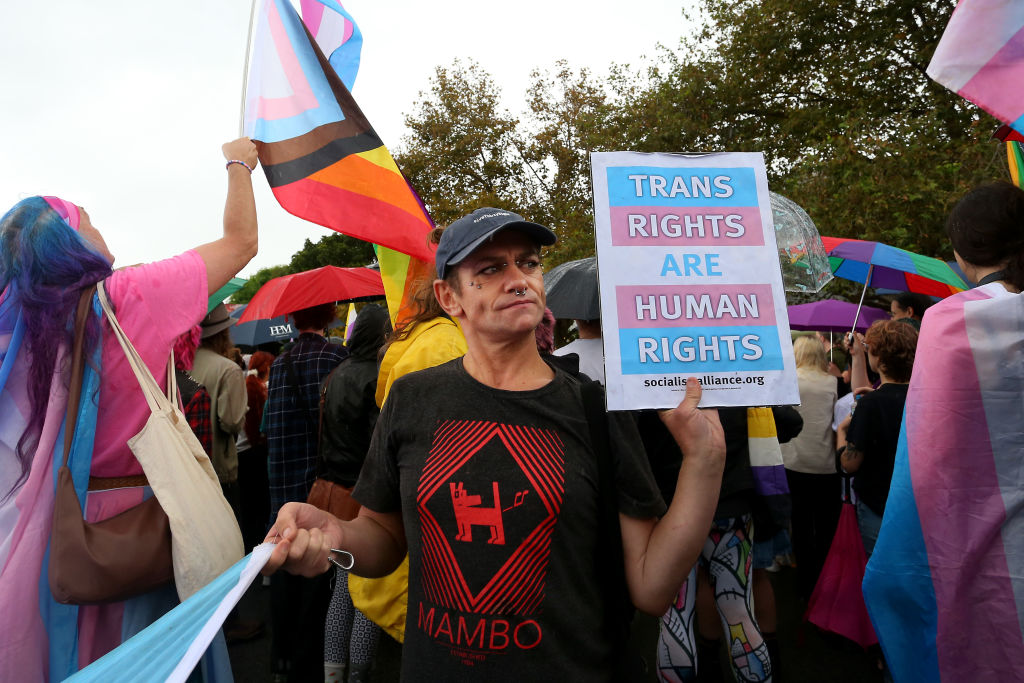From voting booths to board rooms — feminists have long fought to make women visible. Visibility, after all, is a crucial tool for uplifting marginalized communities and creating the foundation for equality. Some women, however, find themselves still entrenched in this fight for authentic representation.
March 31 marked International Transgender Day of Visibility. Launched on Facebook in 2009 by Michigan trans therapist and activist Rachel Crandell-Crocker, it has spread around the world. On this day, trans people make themselves seen by gathering together and posting on social media to bring more awareness to their community.
But though the day has gained broad recognition — marked last year by a statement from U.S. Secretary of State Anthony Blinken — transgender activists and journalists remain concerned that media coverage of their community is overwhelmingly sensational and derogatory.
Over 70% of Americans say they have never personally met a trans person. That means the public’s understanding of this community comes largely through the media.
Today, the news is full of stories about anti-trans legislation popping up in states throughout the country and right-wing politicians using what trans people describe as hateful rhetoric designed to rile up their bases. A recent opinion piece on “detransitioners” — people who say they regret their transition — in the New York Times was widely criticized by journalists and medical professionals. A systematic review of medical databases carried out by researchers from eight institutions, including Harvard Medical School, found the regret rate for gender affirming care — a mere 1% — is lower than routine knee and hip surgeries.
Trans journalists like Adam Rhodes, a training director of Investigative Reporters and Editors, say that, when so much of the coverage on trans people is politicized and medicalized, it fails to represent the “full and complicated lives” trans people lead. Rhodes reports on the criminal justice system and its impacts on incarcerated LGBTQ+ people. They are also board secretary for the Trans Journalists Association (TJA) — a professional organization with 200 members founded in 2020 that aims to promote better coverage of the trans community.
To Rhodes, the tokenization of trans people is one of the biggest hurdles facing the community. “Trans people exist outside of legislative chambers. They exist outside of lawsuits. They exist outside of doctor’s offices,” Rhodes said. “They should be included in every story — especially when it’s not about being trans.”
To do that, Rhodes said, journalists need to better understand how to talk to trans people and see them beyond their gender identity. TJA has published a stylebook and coverage guide to help other journalists report accurately and contextually. When the public is presented a flattened image of a diverse and complicated group, they said, it distorts the whole community’s humanity.
With the mainstream media often an unfriendly place for trans journalists, some, like Alyssa Steinsiek, fight back against anti-trans disinformation in the news through alternative outlets. Steinsiek calls herself a “transphobia investigator” as a columnist for Assigned Media, a site founded in 2022 by freelance journalist, Evan Urquhart, that documents and dispels anti-trans propaganda in the news.
“It’s easy to fall victim to propaganda,” says Steinsiek. Part of her work includes the site’s Trans Data Library project, a Wikipedia-like resource detailing the players pushing these dehumanizing narratives. Steinsiek says she confronts a lot of “needless pathologization” of trans people in the media that treats them like their very existence is a problem to be solved.
She said she does this work because transphobic media coverage makes her feel personally unsafe..
“I’ll be honest, I don’t go out in public a lot,” said Steinsiek, who lives in the mountains of western South Dakota. “All of that inflammatory representation, it really makes you scared.”



